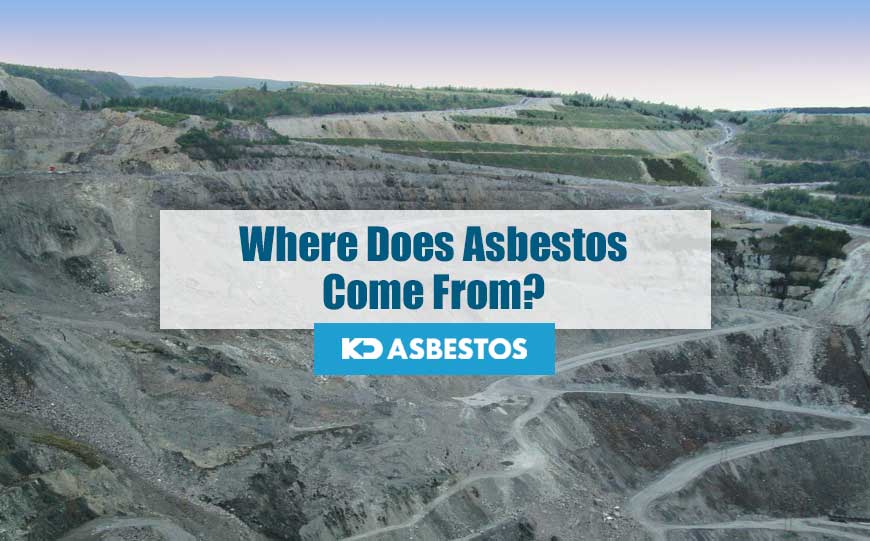
It’s a well known fact that it’s a dangerous mineral fibre, but where does asbestos come from?
Exposure to asbestos can lead to various negative effects on health.
Prolonged exposure can also be responsible for developing mesothelioma and asbestosis, among others.
However, many are not that knowledgeable on what asbestos really is, and where it comes from.
In the article below we explore more about where asbestos come from and its origins.
Table of Contents
What is Asbestos?
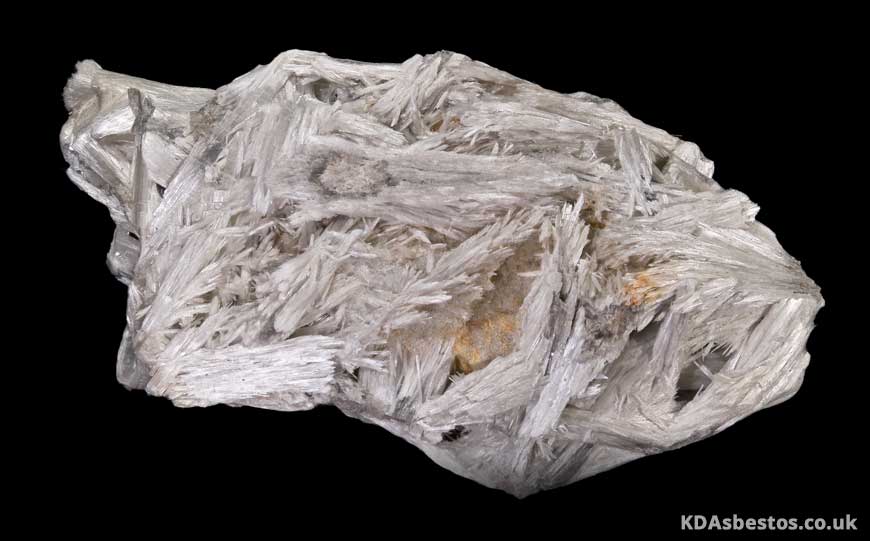
Asbestos is a naturally occurring mineral fibre.
It’s found in rocks as well as in soil.
It is mainly composed of silicon and oxygen, as well as a number of other elements.
The fibres are miniscule, and so cannot be seen unless viewed under a microscope.
Asbestos minerals are made up of long, thin fibres.
If these are disturbed, either by abrasion, deterioration or other actions that can make them airbourne, then whoever is in that area is at risk of inhaling them.
When asbestos fibres are inhaled they make their way into the lungs, possibly leading to various illnesses, including asbestosis, mesothelioma and lung cancer.
Asbestos was widely used in many countries due to its varying properties.
Being fire resistant and able to make materials much stronger, it was used in various industries including construction, shipbuilding, firefighting, military, and many more.
It was sadly several years until the use of asbestos was finally banned.
By then, there were already many deaths associated with asbestos exposure, especially workers who were employed in industries where the use of asbestos was the norm on a daily basis.
Types of Asbestos
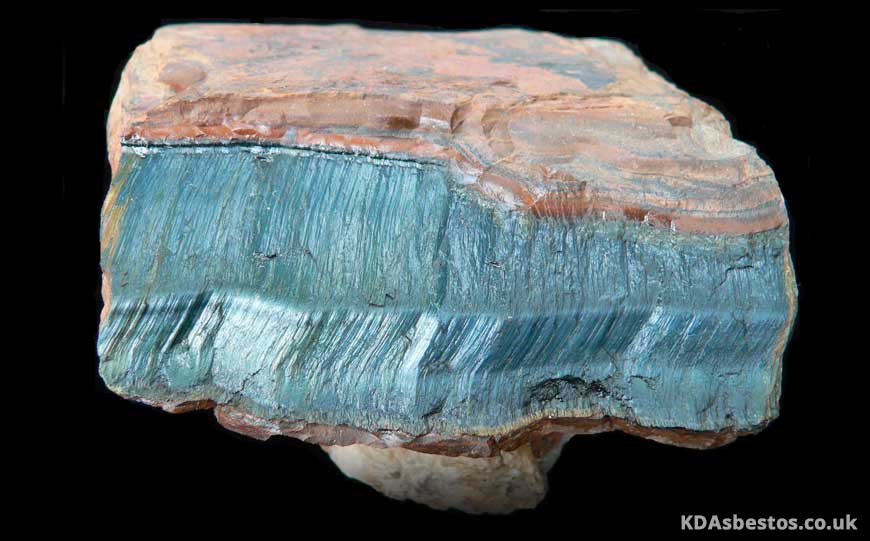
There are six main types of asbestos, which are classified in two categories, namely:
- Amphibole
- Serpentine
In the latter category, there’s only one type of asbestos, which is Chrysolite.
Sometimes it’s also referred to as white asbestos.
The fibres have a curly appearance, and they have a layered structure
White asbestos was commonly used in the construction industry and can be found in several old buildings, plaster, roofing, ceilings, floor tiles and pipe insulation, among others.
The Amphibole category includes five types of asbestos.
These include:
- Crocidolite
- Tremolite
- Amosite
- Actinolite
- Anthophyllite
The last two were not used as much as the first three, but they can still be found in some materials and products.
All of these asbestos fibres have a straight and jagged shape.
They are often described as looking like needles.
These minerals were also commonly used in the manufacture of various products and materials, including cement sheets, ceiling tiles, insulating boards and thermal insulation products.
Where Does Asbestos Come From?
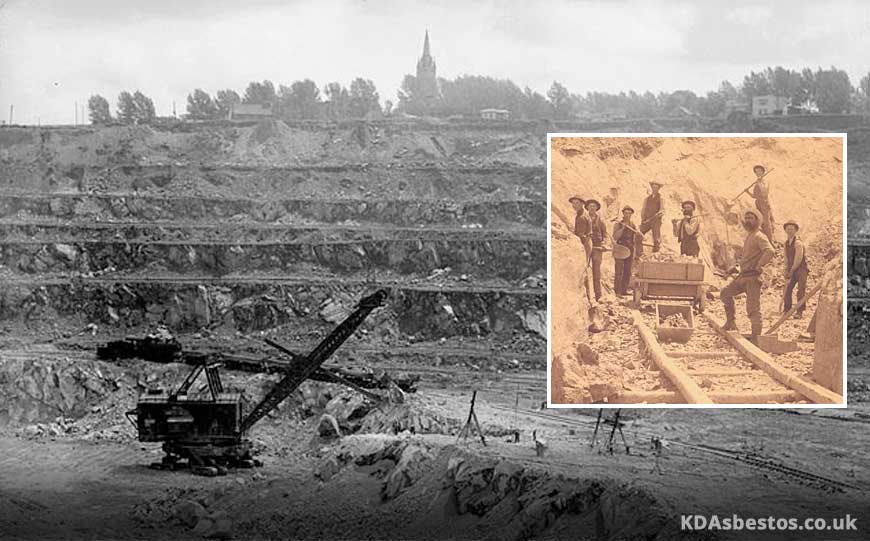
Asbestos deposits can be found in rocks and soil.
While it is present practically all over the world, the large scale asbestos industry started off in Canada where mining of asbestos dates back to the 1870s.
After around a decade, several other countries such as the USA, South Africa, Russia and Italy, followed suit.
They started to produce asbestos for industrial purposes and consequently, the use of asbestos became more widespread all over the world.
Nowadays most countries have banned the production of asbestos, since it is recognised as being a serious health hazard.
However, the mining of asbestos is still taking place in some countries such as Russia, Kazakhstan, China, and Brazil.
Asbestos Health Hazards
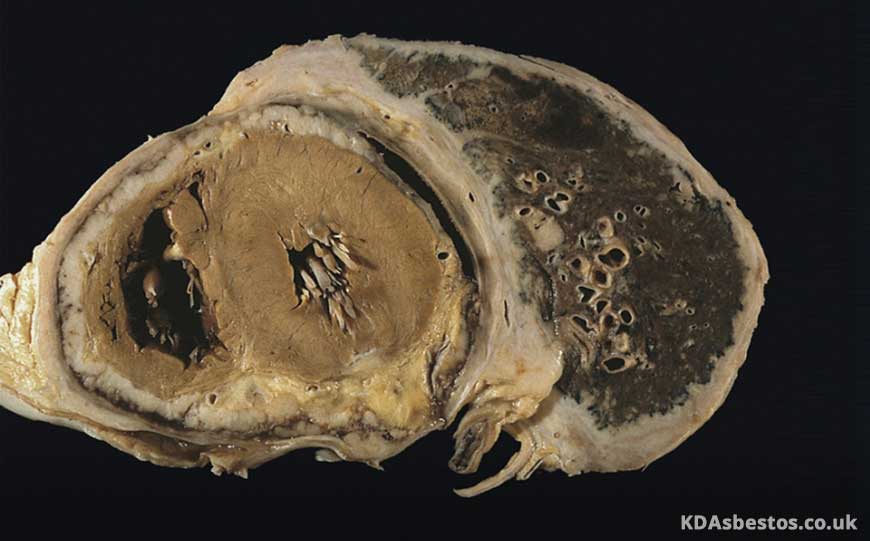
It has been proven by many scientific studies that the exposure to asbestos is conducive to a wide range of serious diseases.
When asbestos fibres are inhaled they end up staying in the lungs.
They cannot be easily dislodged or absorbed from here, especially since they are so small.
As a result, they penetrate deep into the lungs.
Mesothelioma is a cancer that is directly linked to asbestos exposure, and it is in fact often referred to as a signature disease.
This is a cancer of the lining of the lungs which can take between twenty and forty years to develop, and yet it is generally fatal in less than two years from when it is diagnosed.
Asbestos can also lead to different types of cancers, such as lung cancer, laryngeal cancer and ovarian cancer.
Other asbestos-related diseases include asbestosis, COPD, and pleural related conditions like pleural effusions and plaques and pleuritis.
Asbestos Exposure Symptoms

A one time exposure to asbestos is not likely to lead to any severe repercussions healthwise.
Illnesses and serious conditions tend to emerge after several years, if a person has been subjected to regular exposure to a large amount of asbestos over a substantial amount of time.
Some of the symptoms that could indicate that one might have suffered from asbestos poisoning include:
- Shortness of breath
- Dry cough
- Wheezing
- Swollen finger tips
- Loss of appetite
- Fatigue
In most cases the incubation period is very long, ranging up to as much as forty years later.
Besides being aware of the above symptoms, it is also important to evaluate your past, such as whether you used to work in a job or a trade such as engineering, construction or ship building.
Asbestos exposure could also have taken place if you used to spend a lot of time in an old building such as a school or factory, where there could have been asbestos containing materials.
Common Asbestos Products
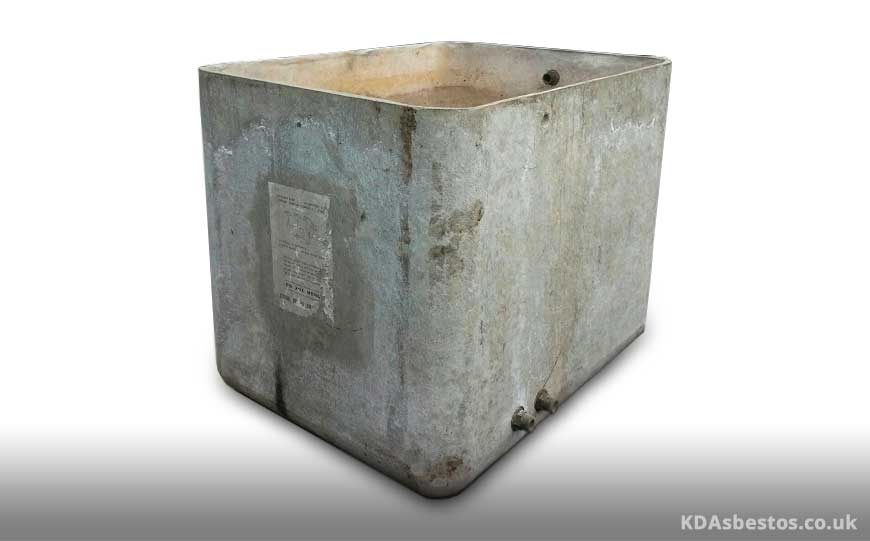
As noted earlier, asbestos was used in several kinds of materials and products before it was banned in many countries.
Both industrial as well as commercial products in a wide range of industries used asbestos.
This includes plumbing, electrical, construction, power generation, automotive, oil and gas.
Even now, there could be asbestos containing products where you live or work.
However, exposure to asbestos today tends to occur in case there needs to be some form of disruption of such materials, which could then lead to the asbestos fibres to become airborne.
Common instances include renovations in buildings, or when an old building is demolished.
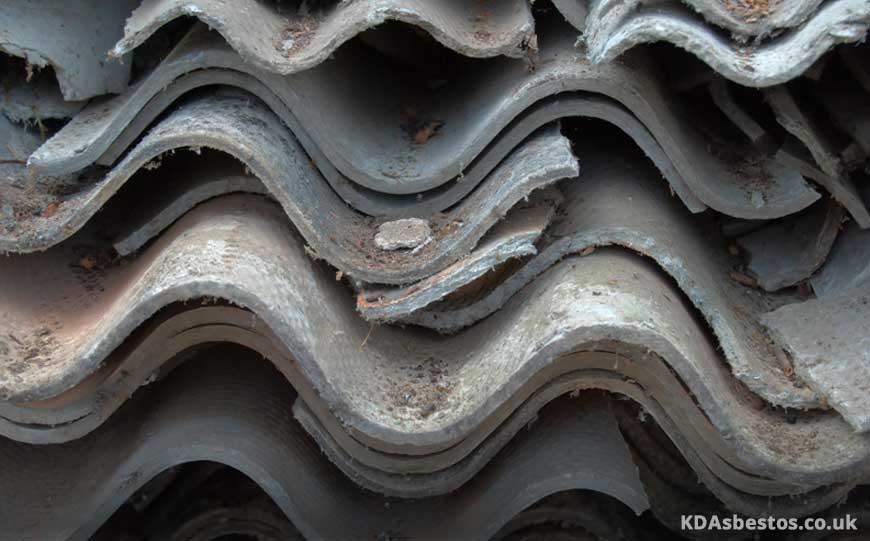
Over the years there have been several asbestos products that were produced, including:
- Asbestos cement
- Tiles used for flooring, ceiling and roofing
- Adhesives
- Sealants
- Coatings
- Asbestos reinforced plastic products
- Asbestos roofing felt and other roofing materials
- Asbestos insulation in pipes and steam engines
- Boilers
- Automotive parts such as brake pads, gaskets, clutches and valves
- Textiles such as blankets and firefighter suits
- Electrical components
- Laboratory equipment
- Duct connectors
- Vinyl products
- Fireproofing
There are even consumer goods that might include asbestos, such as:
- Appliances
- Hair dryers
- Talcum powder
- Potholders
- Ashtray coasters
- Cigarette filters
Identifying Asbestos
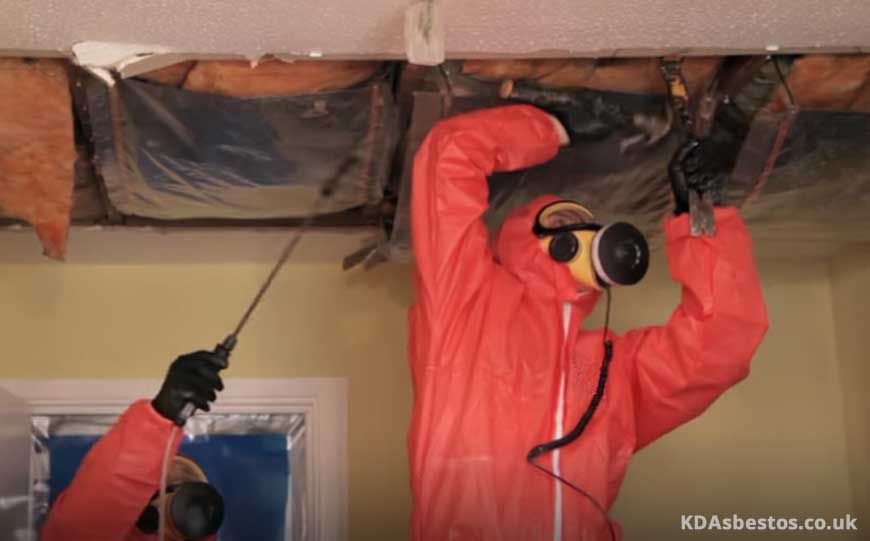
Asbestos fibres are microscopic and so they are not visible to the naked eye.
Besides, they cannot be smelled, or tasted.
Thus identifying the presence of asbestos fibres is practically impossible, unless you are suspecting the possibility of the asbestos containing material based on type or age.
In such cases, lab testing will need to be conducted on a sample of the material, to make absolutely sure if there is asbestos present.
Such asbestos testing is only to be carried out by an accredited asbestos specialist.
Asbestos materials are classified in two main categories:
- friable asbestos
- non-friable asbestos
Friable asbestos is most dangerous since it has a high possibility of breaking down, crumbling or coming apart.
As a result the toxic fibres can easily be released into the air.
Non-friable asbestos materials are still dangerous, but not as much as the friable materials.
This is because such materials will only release asbestos fibres in the air if they are subjected to harsh treatment, such as when renovation or demolition is carried out.
Common examples include when cement slabs or asbestos tiles are smashed, broken, sawed or scraped.
Safe Asbestos Removal & Disposal
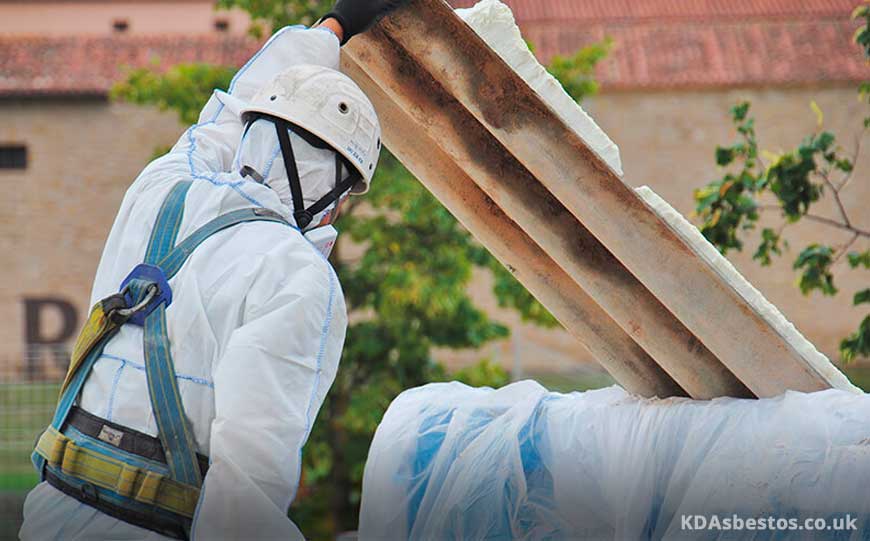
In case the removal of asbestos containing materials needs to be carried out, it is a must to hire a specialist asbestos contractor for such a job.
A certified asbestos abatement company will be able to offer you the best service as well as any advice on such a task.
Asbestos removal and safe disposal is regulated in many countries.
While some jurisdictions allow a homeowner to see to such a task on their own, DIY asbestos removal is never recommended for obvious safety reasons.
The work area would need to be sealed off properly, generally by utilising plastic sheets.
The worker will need to wear protective equipment including a respirator equipped with a HEPA filter, disposable gloves and coveralls.
The asbestos materials will need to be kept wet throughout the process to reduce the amount of dust as much as possible.
Once the removal of the material is completed, the work area will need to be cleaned thoroughly.
A vacuum cleaner with a HEPA filter will need to be used.
The proper disposal of the asbestos waste is also critical.
This needs to be placed in clearly labelled bags, and then taken securely to a special landfill that accepts this kind of dangerous waste.
Conclusion
Asbestos is highly dangerous.
Even though asbestos was banned in the UK in 1999, it may still be present in everyday items at home or at work, or in old buildings.
Thus it is important to be informed about this toxic material, its properties, and where it might be present.
In such a way, you will be able to handle any possible asbestos containing materials properly and safely.